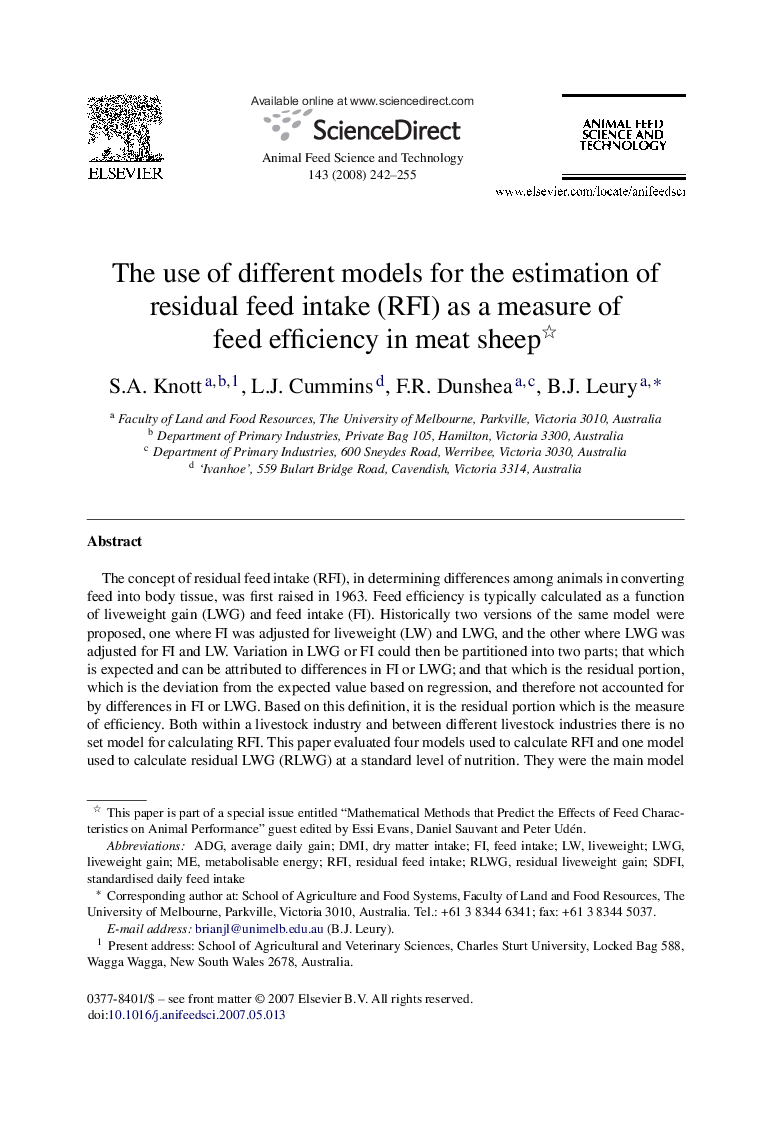| کد مقاله | کد نشریه | سال انتشار | مقاله انگلیسی | نسخه تمام متن |
|---|---|---|---|---|
| 2420557 | 1552470 | 2008 | 14 صفحه PDF | دانلود رایگان |

The concept of residual feed intake (RFI), in determining differences among animals in converting feed into body tissue, was first raised in 1963. Feed efficiency is typically calculated as a function of liveweight gain (LWG) and feed intake (FI). Historically two versions of the same model were proposed, one where FI was adjusted for liveweight (LW) and LWG, and the other where LWG was adjusted for FI and LW. Variation in LWG or FI could then be partitioned into two parts; that which is expected and can be attributed to differences in FI or LWG; and that which is the residual portion, which is the deviation from the expected value based on regression, and therefore not accounted for by differences in FI or LWG. Based on this definition, it is the residual portion which is the measure of efficiency. Both within a livestock industry and between different livestock industries there is no set model for calculating RFI. This paper evaluated four models used to calculate RFI and one model used to calculate residual LWG (RLWG) at a standard level of nutrition. They were the main model currently in use in the Australian beef cattle industry (RFIB), the original models proposed in 1963 (RFI1963; RLWG1963); a French model which included ultrasound measures of muscle and fat depth (RFIF) and the use of the Australian feeding standards to calculate predicted intake and thus RFI (RFISCA). Using feed intake, liveweight and body composition data generated from the same group of sheep (n = 52) at two ages (6 mo, 13 mo), the relative merits of each model were evaluated and compared to the other models, to determine the most appropriate model to calculate RFI for sheep. For all the models except that used to calculate RLWG, over half of the variation in FI could be explained by the model. The amount of variation in FI accounted for depended on the parameters included and the dataset, with less variation in FI explained by the specific models in the older animals. The RFIF model, which included measures of body composition, accounted for the greatest proportion of the variation in FI and as such suggests that the inclusion of body composition parameters is likely to more accurately reflect true biological efficiency.
Journal: Animal Feed Science and Technology - Volume 143, Issues 1–4, 22 May 2008, Pages 242–255